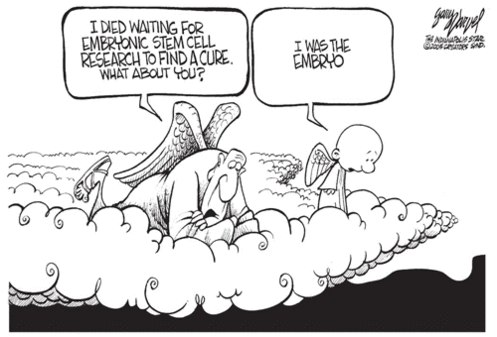
Stem Cell
What is an induced pluripotent stem cell?
Induced pluripotent stem cell (IPSC) is an artificial cell made from a specialized cell and is a pluripotent stem cell that has the similar differentiated potential as an embryonic stem cell.
IPSC can be a cell that is made from an ordinary skin cell, a specialized cell, that after the process of making an IPSC, it can become any cell. The IPSC made from a skin cell can now become all kinds of cells such as brain cell, nerve cell and etc.
How is an Induced pluripotent stem cell made?
In cell development, all cells in the muticellular organism are developed from pluripotent stem cells into specialized cells. Through the cell division, a pluripotent stem cell can create many new cells and the new cells have the ability to specialize into any cells such as skin cells. The identity of a new cell is decided by a specific gene in the nucleus of the cell. The genes in all cells are the same but only a specific gene that contains the information of the specialized cell is operating and other unused genes are compressed and put aside. The gene directs the cell to make particular proteins and these proteins are the factors that give the cell its identity. For example, if the protein in the cell read the gene of a skin cell, the cell will began to produce proteins that turn it into a skin cell.
The making of an Induced pluripotent stem cell is to reverse the process of the natural cell development. By putting the four proteins that are the factors that make embryonic stem cell pluripotent, scientists are able to reprogram the specialized identity of a differentiated cell to become a pluripotent stem cell. The four DNA transcription factors, the Sox 2, Oct 4, Klf 4, c-Myc are carried into the targetd specialize cell through to reverse development as it replicate. After multiple replications, all chromosomes in the cell are unwound and the cell becomes pluripotent stem cell. This artificial cell is the Induced pluripotent cell.
(4)
[8] By adding the four DNA transcription Sox2, Oct 4, Klf 4, c-Myc the specific somatic cell can be reprogramed into iPSCs.



Induced Pluripotent Stem Cell(IPCS)
[9] The four transcription factors unwound the stored away DNA and give the cell the ability to differentiate.
What can IPSC do?
First of all, the IPSC provides a new tool for the study of disease and drug. It allows scientist to use lab grown cell as model for human disease. With these models of diseases in dishes, scientist can observe and understand disease-causing events in cells and immune deficiency in early fetal development. With a better understanding of diseases and disorder, scientist in the future might be able to rectify these disorder in early fetal developement. Also, the lab grown tissue can help scientist tested out new medicines for curing diseases.
Furthermore, as every individual has a distinct body like no one else so medicine works differently on each individual. The IPSC made possible for personalized medicine being made. by allowing medicines can be tested on an individual’s tissue in lab.
IPSC also can be use in regenerative medicine. As IPSC is a pluripotent stem cell, it can create new tissue to replace damaged body parts. Besides, IPSC is generative from individual patient so it is genetically identical to the individual patient so it can avoid transplant rejection.
IPSC also replaced embryonic stem cell in many researches. This avoid the many ethical issue from destroying embryo for embryonic stem cell research.
What are the concerns for the IPSC?
While Induced pluripotent stem cell seems to solved the ethical issue of destroying human embryo for pluripotent stem cell research, it is still controversial because of its ability to become human embryo.
The IPSC was first designed by Doctor Shinya Yamanaka to avoid the destruction of human embryo in stem cell research and it did success. The IPSC can replace embryonic stem cell in many researches and avoid the use of human embryonic stem cell.
Although IPSC gives a solution to embryonic stem cell research debate, it poses new concern as it obscured the definition of life. The IPSC can be program to create sperm and egg and become a life. This means that IPSC can make a skin cell into a life.
Furthermore, as an immature science, many others concern that the use of the IPSC in therapy may cause cancer. The lab grown cells have a great uncertainty and have a great risk of mutating and become an oncogene (gene that may cause cancer) because of the c-myc used to generate a differentiated cell into IPSC.
Also the IPSC can not completely replace embryonic stem cell research because there are still difference in the current IPSC and embryonic stem cell.
(5)

[10]

[11] iPSCs have provide a solution to the embryonic stem cell debate.
[7]
(Citation 9) (Citation 10) (Citation 11) (Citation 12) (Citation 13)
Go to the next page: